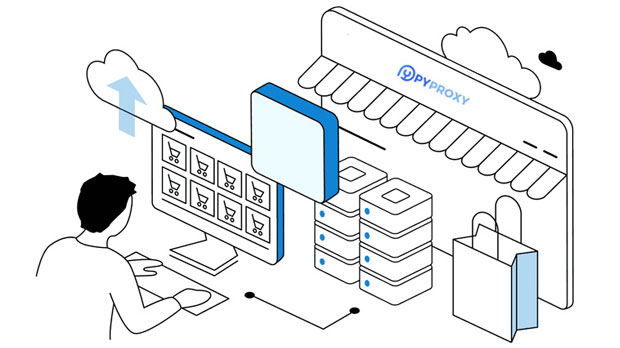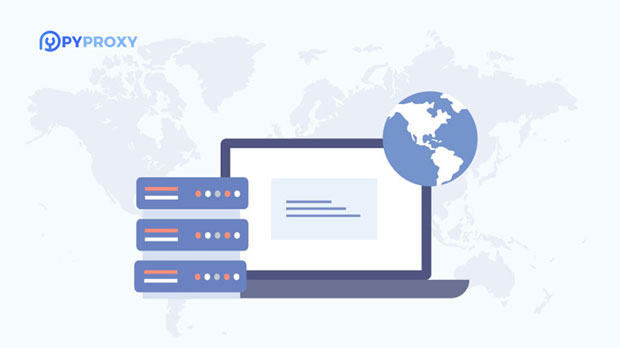Free proxy IP SOCKS5 is widely utilized in a variety of online activities, providing users with anonymity, security, and access to restricted content. The primary use cases for free socks5 proxies often include browsing the internet anonymously, bypassing geographic restrictions, scraping data, managing multiple accounts, and enhancing security in online communications. This article will delve into these major use cases, analyzing the practical significance and value that these proxies bring to individuals and businesses alike. 1. Anonymous BrowsingOne of the most common reasons people use free SOCKS5 proxies is for anonymous browsing. By masking the user's IP address, SOCKS5 proxies allow individuals to surf the web without revealing their true location or identity. This is particularly valuable in situations where privacy is paramount, such as when accessing sensitive information or engaging in online activities that could compromise personal security. In a world where data breaches, online surveillance, and identity theft are growing concerns, using a socks5 proxy ensures that users can navigate the web with greater confidence, reducing the risk of being tracked or targeted.2. Bypassing Geo-RestrictionsAnother significant use case for SOCKS5 proxies is bypassing geographic restrictions. Many websites and online services restrict access to their content based on the user's location, whether due to licensing agreements, government censorship, or other reasons. With a SOCKS5 proxy, users can easily mask their real IP address and make it appear as if they are accessing the web from a different country. This is particularly useful for streaming services, where certain shows or movies may only be available in specific regions. Similarly, users can access websites or services that are otherwise blocked or restricted in their country.3. Web Scraping and Data CollectionFor businesses, researchers, and marketers, data collection and web scraping are essential tasks. However, scraping data from websites can be a challenging process due to restrictions such as CAPTCHAs, IP blocking, and rate-limiting by websites. SOCKS5 proxies help to solve this issue by allowing users to rotate IP addresses, avoiding detection, and ensuring smooth scraping operations. By using a SOCKS5 proxy, businesses can gather valuable data from various online sources without facing the risks of being blocked or flagged as suspicious activity. This is especially beneficial for those involved in competitive analysis, price monitoring, or market research.4. Managing Multiple AccountsMany online platforms, such as social media networks, gaming platforms, and e-commerce sites, impose restrictions on the number of accounts that can be created or used from a single IP address. Users who wish to manage multiple accounts on these platforms may face difficulties due to these restrictions. SOCKS5 proxies allow users to create and manage multiple accounts by providing different IP addresses for each one. This is especially useful for digital marketers, social media managers, and online entrepreneurs who need to handle multiple accounts for various purposes, such as running ads, testing, or engaging with different communities.5. Enhancing Security in Online CommunicationFor individuals concerned with online security, particularly when using public Wi-Fi or accessing sensitive data, SOCKS5 proxies offer an additional layer of protection. By routing traffic through a proxy server, users can safeguard their internet connection from potential threats, such as hackers or malicious entities trying to intercept data. This is particularly important for those engaging in activities like online banking, shopping, or entering personal information on websites. The SOCKS5 proxy ensures that data transmitted between the user’s device and the destination website is encrypted and anonymized, reducing the chances of a security breach.6. Circumventing Censorship and Government MonitoringIn countries with strict censorship policies, where certain websites, news outlets, or social media platforms are blocked, SOCKS5 proxies provide a way for users to circumvent these restrictions. By connecting to a proxy server located in a different region, individuals can access blocked content without fear of government surveillance or punishment. This is particularly beneficial for journalists, activists, and ordinary citizens living under oppressive regimes where freedom of expression is limited. The ability to use a SOCKS5 proxy to bypass these restrictions is crucial for maintaining access to independent news, social platforms, and uncensored information.7. Testing and Quality AssuranceFor developers, testers, and quality assurance professionals, using free SOCKS5 proxies offers an easy way to simulate different user environments and test how websites or applications perform across various regions. By connecting to proxies in different geographical locations, developers can check how their applications behave when accessed by users from various parts of the world. This helps identify potential issues related to load times, geo-targeting, and content availability, ensuring a smoother user experience. Moreover, this allows testing for platform compatibility, security issues, and bug fixes before launching globally.8. Overcoming Traffic Restrictions and ThrottlingCertain online services or websites may impose traffic restrictions on users who access their content too frequently or too quickly. These restrictions are usually designed to prevent bots from overloading the system or to ensure fair usage among all users. Free SOCKS5 proxies can be used to circumvent these restrictions by rotating IP addresses and making the requests appear as if they are coming from different users or sources. This is particularly beneficial for activities like automated browsing, data scraping, or accessing heavily trafficked websites without facing slowdowns or delays caused by traffic throttling.9. Enhancing Online Gaming ExperienceGamers often use SOCKS5 proxies to improve their online gaming experience. A SOCKS5 proxy can help reduce latency, bypass regional restrictions on game servers, and avoid DDoS attacks. By connecting through a proxy server located closer to the game server, players can reduce the lag they experience while playing multiplayer games. Additionally, for those in regions with limited access to certain games or servers, SOCKS5 proxies provide a way to connect to servers located in other countries, improving gameplay quality and providing access to exclusive content.Conclusion: Practical Significance of Free Proxy IP SOCKS5The use of free SOCKS5 proxies is valuable across many different scenarios, from enhancing privacy and security to overcoming regional restrictions and bypassing censorship. Whether for personal use, business operations, or testing, SOCKS5 proxies provide users with the ability to surf the web anonymously, access restricted content, scrape data, and manage multiple online accounts. By offering an additional layer of security and flexibility, these proxies play a crucial role in ensuring that users can navigate the online world with greater freedom and protection. However, it is important for users to stay informed about the limitations and potential risks of using free proxies, as they may not always offer the same level of reliability and speed as paid alternatives.
Jan 07, 2025
![arrow]()



























































